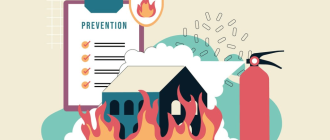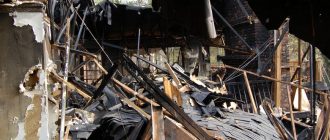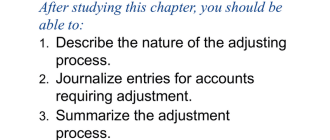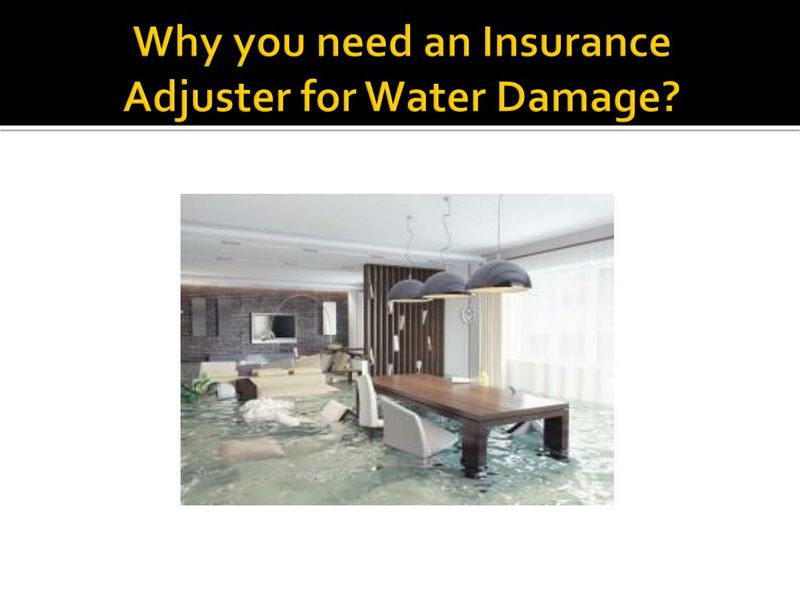
Handling Water Damage Claims: An Adjuster’s Guide.
Are you facing water damage claims and don’t know where to start? Look no further! Our comprehensive guide is here to help you navigate the complexities of handling water damage claims with ease and confidence.
Water damage can be a nightmare for both property owners and insurance adjusters alike. From burst pipes to natural disasters, there are numerous ways water can wreak havoc on homes and businesses. Don’t let the stress of dealing with water damage claims overwhelm you – our guide will provide you with the knowledge and strategies you need to effectively handle these claims.
With the water damage claims guide, you’ll learn:
The different types of water damage: Understand the varying degrees and types of water damage, from category 1 (clean water) to category 3 (black water).
The importance of documentation: Learn how to properly document and assess water damage claims, including capturing photographs, recording statements, and gathering supporting evidence.
The role of insurance policies: Gain insights into how insurance policies and coverage can affect water damage claims, including exclusions and limitations.
Effective negotiation techniques: Discover strategies for negotiating fair settlements and resolving disputes with claimants, contractors, and other involved parties.
Beyond the claim: Find tips for assisting policyholders with mitigating further damage, selecting reliable contractors, and preventing future water damage.
Don’t let water damage claims leave you high and dry. Trust our adjuster’s guide to equip you with the knowledge and skills you need to handle water damage claims like a pro. Order your copy today!
Importance of Water Damage Claims
Water damage can be devastating to homes and properties, causing significant financial loss and emotional distress. It is crucial for homeowners and businesses to understand the importance of water damage claims and how they can help in the recovery process.
Handling water damage claims can be a complex task, requiring expertise and knowledge of the insurance process. That is why “Handling Water Damage Claims: An Adjuster’s Guide” serves as an essential resource for adjusters who need guidance in effectively managing water damage claims.
Water damage claims involve documenting the extent of damage, assessing the cause of the damage, and estimating the cost of repairs or replacements. Insurance adjusters play a vital role in facilitating this process, ensuring that policyholders receive fair compensation for their losses.
Without proper handling of water damage claims, policyholders may face delays in receiving the necessary funds to restore their properties. Additionally, they may receive inadequate reimbursements, which can hinder the recovery and restoration process.
By following the steps outlined in the adjuster’s guide, water damage claims can be handled efficiently and effectively, minimizing stress and streamlining the insurance process. Adjusters will learn how to assess the damage accurately, document the loss appropriately, and negotiate fair settlements with policyholders.
Overall, the importance of water damage claims cannot be overstated. They are the key to recovery, providing policyholders with the financial support and peace of mind needed to restore their lives and properties after a water-related disaster. With the right handling and guidance provided by “Handling Water Damage Claims: An Adjuster’s Guide,” adjusters can play a vital role in helping homeowners and businesses recover from water damage incidents.
Understanding the Claims Process
When it comes to handling water damage claims, it is crucial for adjusters to have a clear understanding of the claims process. This guide aims to provide adjusters with the necessary knowledge and insights to effectively navigate through the complexities of handling water damage claims.
The claims process begins when the policyholder files a claim with their insurance company for water damage. This can occur as a result of various factors, such as leaks, burst pipes, flooding, or natural disasters. It is the adjuster’s role to assess the extent of the damage and determine the coverage and compensation that the policyholder is entitled to.
Upon receiving the claim, the adjuster will conduct a thorough investigation to gather all the necessary information. This may involve visiting the property, interviewing the policyholder, and gathering evidence to support the claim. The adjuster will also assess any potential liability factors and ensure that all the required documentation is in place.
Once the investigation is completed, the adjuster will evaluate the damages and determine the appropriate compensation based on the policy’s terms and conditions. This may involve consulting with third-party experts, such as contractors or restoration specialists, to accurately assess the cost of repairs and restoration.
After evaluating the damages, the adjuster will then negotiate with the policyholder to reach a fair settlement. This may involve addressing any disputes or disagreements regarding the coverage or compensation. The adjuster will work closely with the policyholder to ensure that their needs are met and that the claims process is handled efficiently and professionally.
Finally, once an agreement is reached, the adjuster will oversee the processing and payment of the claim. This includes coordinating with the insurance company’s internal systems and departments to ensure that the policyholder receives their compensation in a timely manner.
In conclusion, understanding the claims process is essential for adjusters when handling water damage claims. By following a systematic approach and employing effective communication and negotiation skills, adjusters can ensure a smooth and satisfactory resolution for the policyholder.
Assessing Water Damage
When it comes to handling water damage claims, assessing the extent of the damage is an essential step for every adjuster. This guide will provide you with a comprehensive understanding of how to accurately assess water damage and determine the appropriate course of action.
1. Start with the Source
The first step in assessing water damage is to identify the source of the water. This could be a burst pipe, a leaking roof, or even natural flooding. Finding the source will help you understand the cause and potential severity of the damage.
2. Evaluate the Category
Water damage is categorized into three main categories:
- Category 1: Clean water from a sanitary source, such as a broken water supply line.
- Category 2: Contaminated water that could cause illness if ingested, such as water from a dishwasher or washing machine.
- Category 3: Highly contaminated water, often referred to as “black water,” which can cause severe illness or even death, such as sewage backup or floodwater.
Evaluating the category of the water damage will help determine the appropriate safety measures and cleanup procedures.
3. Assess the Damage
Closely examine the affected area to assess the extent of the damage. Look for visible signs of water intrusion, such as water stains, mold growth, or structural damage. Take photographs and detailed notes to document the damage accurately.
4. Conduct Moisture Mapping
Use specialized equipment such as moisture meters and thermal imaging cameras to conduct moisture mapping. These tools will help you identify areas with hidden moisture and determine the best course of action for drying and restoration.
5. Document the Claim
Throughout the assessment process, it is crucial to document all findings, measurements, and observations. This information will serve as essential evidence during the claims process and ensure accurate compensation for the policyholder.
By following these steps and using this guide, you will be equipped with the knowledge and tools necessary to assess water damage accurately. Remember, your expertise and thorough assessment will make a significant difference in handling water damage claims effectively.
Documenting the Damage
One of the most crucial steps in handling water damage claims as an adjuster is documenting the extent of the damage. This documentation serves as vital evidence for both the insurance company and the policyholder. Through diligent documentation, an adjuster can accurately assess the situation, determine the necessary repairs or replacements, and resolve the claim efficiently.
When documenting water damage, it is essential to be meticulous and thorough. Begin by taking clear and detailed photographs of the affected areas from various angles. These photographs should capture both the immediate damage and any secondary damage that may have occurred as a result, such as mold growth. By providing visual evidence, you can better support your assessment and validate the claim.
Additionally, it is crucial to note any relevant information in writing. This includes recording the date and time of the incident, the probable cause of the water damage (such as a burst pipe or heavy rainfall), and any pre-existing conditions that may have contributed to the extent of the damage.
In some cases, it may be necessary to seek the assistance of specialized professionals to assess and document the damage accurately. For instance, water damage restoration experts can utilize advanced equipment and techniques to identify hidden damage or moisture buildup within walls or flooring.
Furthermore, providing detailed reports and diagrams can be beneficial. These reports should outline the extent of the damage, including specific measurements, affected materials, and a comprehensive breakdown of the necessary repairs or replacements. These detailed reports can help streamline the claim process and ensure that all parties involved have a clear understanding of the scope of work.
Always remember to maintain accurate, organized, and easily accessible records. This includes keeping copies of all photographs, documents, and communication related to the claim. These records not only serve as evidence but can also provide a reference point for any future disputes or inquiries.
In conclusion, documenting the damage is a critical aspect of handling water damage claims as an adjuster. By utilizing photography, written records, professional assessments, and detailed reports, you can ensure a fair and efficient resolution of the claim. With proper documentation, you can provide the necessary support and guidance while upholding the trust of both the insurance company and the policyholder.
Working with Insurance Companies
When it comes to handling water damage claims, working effectively with insurance companies is essential. Understanding the insurance process and navigating through it can make a significant difference in the outcome of a claim.
Communication
Open and clear communication with insurance companies is vital. Timely and accurate reporting of the damage, as well as providing detailed documentation and photographs, can greatly expedite the claims process. It is essential to keep the lines of communication open throughout the entire process to ensure a smooth and efficient resolution.
Policy Coverage
Understanding the policy coverage is crucial to properly handling water damage claims. Familiarize yourself with the language and limitations of each policy to effectively assess the extent of the damage and provide accurate estimates for repair or replacement.
Documentation
Thorough documentation is key when dealing with insurance companies. Keep track of all conversations, emails, and correspondence related to the claim. Take detailed notes during inspections and provide supporting documentation, such as invoices and receipts, to support your assessment of the damages.
Negotiation Skills
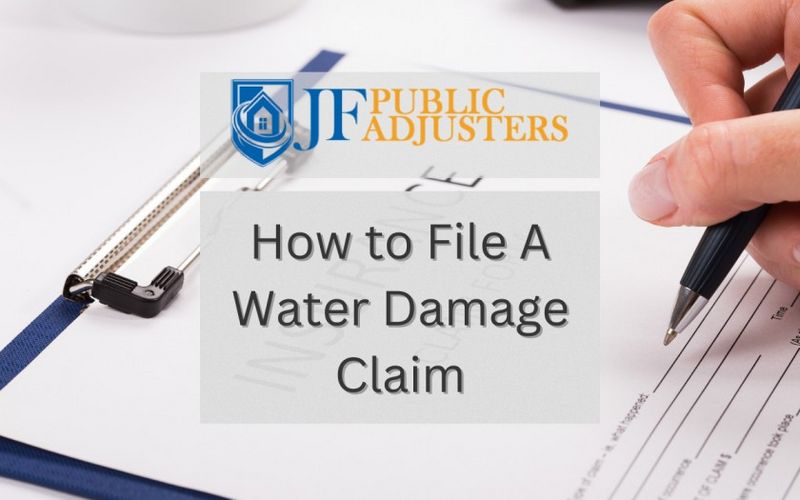
Strong negotiation skills are essential when working with insurance companies. It is important to present a compelling argument supported by facts and evidence to ensure fair compensation for the damages. Being proactive and persistent throughout the negotiation process can help achieve a favorable outcome.
Timely Claims Handling
Effectively handling water damage claims requires prompt action. Swiftly initiating the claims process, documenting the damages, and following up with insurance companies in a timely manner can help expedite the resolution of the claim and minimize further damage.
Expertise
Having a deep knowledge of the water damage restoration industry can greatly benefit your work with insurance companies. Understanding the different types of water damage, causes, and best practices for restoration can ensure accurate assessments and effective collaboration with insurance adjusters.
Remember, successfully working with insurance companies when handling water damage claims can lead to a faster resolution and fair compensation for your clients. By following these guidelines, you can navigate the insurance process with confidence and achieve the best possible outcome for everyone involved.
Negotiating Settlements
When handling water damage claims as an adjuster, negotiating settlements is a crucial step in the claims process. As a skilled adjuster, it is your responsibility to ensure that the settlement reached is fair and equitable for all parties involved.
Here are some key tips for negotiating settlements in water damage claims:
- Thoroughly assess the extent of the water damage: Before entering negotiations, it is essential to have a clear understanding of the damage caused by water. This includes evaluating the affected areas, the severity of the damage, and the potential costs involved in repairs or replacements.
- Review the policy details: Familiarize yourself with the policy wording and coverage limits related to water damage claims. This information will help you determine the scope of coverage and the potential settlement amount.
- Gather evidence: Collect all necessary evidence to support your assessment of the water damage and the settlement amount being negotiated. This may include photographs, reports from qualified professionals, and any other relevant documentation.
- Communicate effectively: Open and transparent communication with the policyholder and other involved parties is essential during negotiations. Clearly explain your assessment of the damage and the reasoning behind the proposed settlement amount.
- Consider alternative solutions: In some cases, it may be beneficial to explore alternative solutions to settle the claim. This could include offering a partial settlement, arranging for repairs or replacements directly, or providing additional assistance to the policyholder.
- Be willing to negotiate: Negotiations often involve back-and-forth discussions to reach a mutually agreeable settlement. Be prepared to listen to the concerns and perspectives of the policyholder and other involved parties and be open to making reasonable adjustments if necessary.
- Document the settlement: Once an agreement has been reached, document the settlement details in writing and ensure that all parties involved sign the agreement. This will help avoid any misunderstandings or disputes in the future.
By following these tips, you can effectively negotiate settlements for water damage claims as an adjuster, ensuring a fair resolution for all parties.
Dealing with Mold and Mildew
Mold and mildew are common problems that can arise after water damage occurs. As an adjuster, it is important to understand the proper handling and remediation techniques to address these issues.
In this section of the Adjuster’s Guide to Handling Water Damage Claims, we will provide you with a comprehensive overview of how to deal with mold and mildew.
Identifying Mold and Mildew: When assessing a water damage claim, it is crucial to be able to identify the presence of mold and mildew. Look for visible signs, such as black or green spots on walls, ceilings, or other surfaces. Additionally, be aware of musty odors or an increase in respiratory symptoms reported by the affected parties.
Assessing the Damage: Once mold or mildew has been identified, it is crucial to assess the extent of the damage. Look for signs of structural damage, as well as the potential for health risks. Keep in mind that mold and mildew can spread quickly, so a thorough inspection is warranted.
Remediation Techniques: To effectively handle mold and mildew, proper remediation techniques must be employed. This may include removing affected materials, such as drywall or carpeting, cleaning and disinfecting surfaces, and utilizing specialized equipment, such as dehumidifiers and air scrubbers. It is essential to follow the guidelines set by professional organizations, such as the Environmental Protection Agency (EPA), to ensure safe and effective remediation.
Prevention and Education: As an adjuster, part of your role is to educate clients on how to prevent future mold and mildew issues. Providing tips on proper moisture control, ventilation, and regular maintenance can help minimize the risk of future water damage and subsequent mold growth.
By following the advice and techniques outlined in this guide, adjusters can effectively handle water damage claims involving mold and mildew. Taking the necessary steps to identify, assess, remediate, and prevent mold and mildew can lead to successful claim resolutions and satisfied policyholders.
Handling Structural Damage
When it comes to water damage claims, handling the structural damage is a crucial part of the process. Structural damage can occur due to various reasons such as floods, leaks, or burst pipes, and it requires special attention to ensure that the property is safe and properly repaired.
In order to handle structural damage caused by water, it is important for adjusters to follow a comprehensive guide that covers the necessary steps. This guide will help adjusters assess the extent of the damage, determine the best course of action, and work towards restoring the property to its pre-loss condition.
The first step in handling structural damage is to conduct a thorough inspection of the affected area. This involves identifying any visible signs of damage, such as cracks, bulges, or sagging, as well as any potential hidden damage behind walls or under flooring. It is crucial to document all findings through photographs and written descriptions to support the claims process.
Once the damage has been identified, it is important to assess the severity and the extent of the structural damage. This can be done by consulting with experts such as structural engineers or contractors who specialize in water damage repairs. Their expertise will help determine the best approach to repair the damage and prevent further deterioration.
After assessing the damage, the next step is to develop a detailed plan of action. This plan should include a timeline for repairs, a list of necessary materials and resources, and an estimated cost for the restoration process. Adjusters need to work closely with contractors or restoration companies to ensure that the plan is executed efficiently and effectively.
During the repair process, it is important to monitor the progress and make any necessary adjustments. Adjusters should conduct regular inspections to ensure that the repairs are being carried out according to the plan and that the property is being restored properly. Any deviations from the plan should be documented and addressed promptly.
Finally, once the repairs are complete, adjusters should conduct a final inspection to ensure that the structural damage has been fully restored. This includes checking for any remaining issues or potential problems that may have been overlooked during the repair process. Only when the property has been brought back to its pre-loss condition can the claim be considered fully resolved.
In conclusion, handling structural damage caused by water is a complex process that requires the expertise and attention to detail of an adjuster. By following a comprehensive guide and working closely with contractors or restoration companies, adjusters can ensure that the damage is properly assessed, repaired, and resolved in a timely manner.
Restoring Personal Belongings
When dealing with water damage claims, it is important for adjusters to understand the significant impact such damage can have on personal belongings. Water damage can cause irreversible harm to items that hold sentimental value, making the restoration process a vital part of the claims process.
As an adjuster, your role includes guiding policyholders through the steps of restoring their personal belongings. This guide provides you with essential information and tips to effectively manage this aspect of a water damage claim.
First and foremost, it is crucial to conduct a thorough assessment of the damage. Identify any items that can be salvaged and those that are beyond repair. Communicate with the policyholder to ascertain their priorities and ensure their most cherished belongings are given the highest attention.
Once the assessment is complete, work with trusted restoration professionals who specialize in restoring personal belongings. These experts have the knowledge and equipment necessary to tackle a wide range of items, including furniture, electronics, clothing, and documents.
During the restoration process, emphasize the importance of proper cleaning and drying techniques. This will help prevent mold growth and further damage. Advise the policyholder to avoid attempting restoration on their own, as improper methods can worsen the situation.
Throughout the restoration journey, offer support and guidance to policyholders. Remind them that time is of the essence when it comes to salvaging water-damaged items. The faster they act, the higher the chance of successful restoration.
Additionally, ensure that policyholders are aware of their coverage limits and any additional expenses they may need to bear. By providing transparent information, you can assist them in making informed decisions about the restoration of their personal belongings.
In conclusion, restoring personal belongings is an integral part of handling water damage claims. By following this guide, adjusters can provide expert advice and support to policyholders, ensuring their treasured items receive the best possible care and the maximum chance of successful restoration.
Addressing Health Concerns
When handling water damage claims as an adjuster, it is essential to address the health concerns that may arise as a result of the damage. Water damage can lead to a variety of health issues, such as mold growth and bacterial contamination, which can be harmful to both the homeowners and the adjusters involved in the claims process.
To effectively address these health concerns, it is important for adjusters to stay informed and up to date on the latest guidelines and recommendations for handling water damage claims. This includes understanding the potential health risks associated with different types of water damage, such as clean water, gray water, and black water.
In addition to staying informed, adjusters should also take necessary precautions to protect their health and well-being when inspecting water damaged properties. This includes wearing personal protective equipment (PPE) such as gloves, masks, and coveralls, as well as using proper ventilation to minimize exposure to mold and other harmful contaminants.
Furthermore, adjusters should be aware of any specific health concerns or sensitivities that the homeowners may have. This information can help guide the claims process and ensure that the appropriate measures are taken to address any specific health concerns or accommodate any special needs.
By addressing health concerns in a thorough and proactive manner, adjusters can not only protect their own well-being but also provide a high level of service to homeowners who may be facing the challenges of water damage. By understanding and addressing these concerns, adjusters can help ensure a smooth claims process and a successful resolution for all parties involved.
undefined
What is the book “Handling Water Damage Claims: An Adjuster’s Guide” about?
The book “Handling Water Damage Claims: An Adjuster’s Guide” provides guidance and insights for insurance adjusters dealing with water damage claims. It covers various aspects such as the assessment of water damage, determining coverage, evaluating the extent of damage, and negotiating claims settlements.
Who is the author of “Handling Water Damage Claims: An Adjuster’s Guide”?
The author of “Handling Water Damage Claims: An Adjuster’s Guide” is a seasoned insurance adjuster with years of experience in handling water damage claims. They have firsthand knowledge and expertise in this field, which they share in the book to help other adjusters navigate through these complex claims.
Is “Handling Water Damage Claims: An Adjuster’s Guide” suitable for beginners in the insurance adjusting field?
Yes, “Handling Water Damage Claims: An Adjuster’s Guide” is suitable for both beginners and experienced insurance adjusters. The book provides a comprehensive understanding of the water damage claims process, covering the basics as well as more advanced topics. It serves as a valuable resource for anyone looking to enhance their knowledge and skills in handling water damage claims.
Does “Handling Water Damage Claims: An Adjuster’s Guide” provide practical tips for assessing water damage?
Yes, “Handling Water Damage Claims: An Adjuster’s Guide” offers practical tips and insights for assessing water damage. The book provides a step-by-step guide on how to inspect water damage, identify the cause of the damage, and estimate the extent of the loss. It also covers the documentation process and includes real-life examples to help adjusters make accurate assessments.
Can “Handling Water Damage Claims: An Adjuster’s Guide” help me negotiate better claims settlements?
Absolutely! “Handling Water Damage Claims: An Adjuster’s Guide” is designed to help insurance adjusters negotiate better claims settlements. The book provides strategies and techniques for presenting claims, negotiating with policyholders, and dealing with other parties involved in the claims process. It equips adjusters with the knowledge and skills needed to effectively advocate for fair and reasonable settlements.
What is the book “Handling Water Damage Claims: An Adjuster’s Guide” about?
The book “Handling Water Damage Claims: An Adjuster’s Guide” is a comprehensive guide for insurance adjusters that provides an in-depth understanding of how to handle water damage claims. It covers everything from assessing water damage to determining coverage and settling claims.
Who is the book “Handling Water Damage Claims: An Adjuster’s Guide” suitable for?
The book “Handling Water Damage Claims: An Adjuster’s Guide” is suitable for insurance adjusters who are responsible for handling water damage claims. It provides valuable insights and practical tips for dealing with the complexities of water damage claims.

